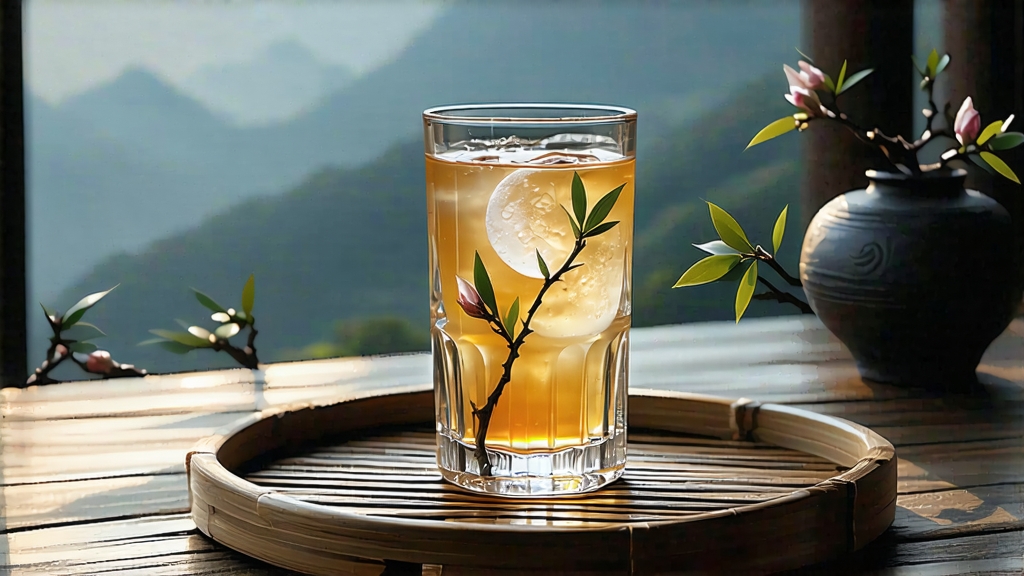
Bai Hao Yin Zhen—literally “White Hair Silver Needle”—is the most aristocratic member of China’s white-tea family. To the uninitiated it may look like a handful of pale twigs, but in the palms of Fuding and Zhenghe farmers these down-covered buds are the distilled essence of spring mist, lunar tides and centuries of trial-and-error. International tea catalogues often lump all white teas together as “mild” or “delicate”; Silver Needle demands a subtler vocabulary, one that speaks of starlight, wet marble and the scent of winter pear blossoming in sudden warmth. This article invites you to travel beyond the generic label and meet the tea that once perfumed the cups of Song-dynasty poets, Ming-dynasty palace ladies and, more recently, European royalty seeking low-caffeine elegance.
History: from tribute to tranquility
The first written record of white tea appears in Song Hui Zong’s “Da Guan Cha Lun” (1107 CE), where the emperor describes “white buds among the tribute cakes” pressed for court consumption. Those cakes were not today’s Silver Needle; they were made from wild var. albino leaves that turned ivory upon steaming. The modern, needle-shaped form emerged during the late Qing, when improved road access allowed Fujian’s coastal counties to sell their unpressed, sun-withered buds to Canton merchants who catered to European buyers. By 1891 Silver Needle was listed in the British Imperial Customs Report as “Pekoe Silver Tips,” fetching prices higher than first-flush Darjeeling. The tea vanished from Western markets during the turmoil of the 1930s–70s, surviving only in small village caches. When China reopened in the 1980s, Japanese and German importers rediscovered it; today Fuding alone exports roughly 800 tons annually, yet the finest micro-batches remain harder to secure than grand-cru Burgundy.
Terroir: two counties, two personalities
Authentic Bai Hao Yin Zhen comes only from Fujian’s northeast: Fuding on the coast and Zhenghe in the foothills. Fuding’s sandy, granite-based soil and maritime breezes produce buds that are plump, silver-green and high in amino acids; the liquor is peach-sweet with a cool oceanic finish. Zhenghe, higher and more humid, gives thinner, steel-grey buds richer in polyphenols; the cup is deeper, with notes of dried apricot and warm hay. Purists treat them as yin and yang expressions of the same cultivar—Fuding Dà Bái Háo (Big White Down) and Zhenghe Dà Bái—much like Burgundy’s Chassagne vs. Puligny. Above 500 m elevation, morning fog slows photosynthesis, increasing the downy trichomes that act as natural sunscreen; these hairs contain cis-3-hexenol and trans-β-ionone, the molecules responsible for Silver Needle’s signature “cucumber-melon” top note.
Plucking: the silent lottery
The harvest window is brutally short: three, sometimes five, days around Qingming (early April) when the buds reach 15–20 mm but have not yet unfurled into leaves. Experienced pickers use thumbnails, not shears, to avoid bruising the stem; a single kilo of finished tea requires roughly 30,000 buds, all plucked before ten o’clock when dew still shields them from oxidation. Rain on any of those days can erase an entire year’s income, giving rise to the local saying, “Silver Needle is gambled, not grown.”
Craft: doing almost nothing, perfectly
White tea’s minimalist craft is deceptive; the fewer the steps, the less room for error. Once back in the shed, the buds are spread one layer thick on bamboo trays called “water screens” and left to wither for 36–48 h. The first 12 h are “green wither,” during which enzymatic reactions reduce grassy aldehydes; the remaining time is “white wither,” when gentle oxidation forms floral lactones. No rolling, no pan-firing—only the whisper of mountain air and the skillful toggling of window shutters to keep ambient humidity between 65–70 %. Finally the buds are baked for 15 min at 40 °